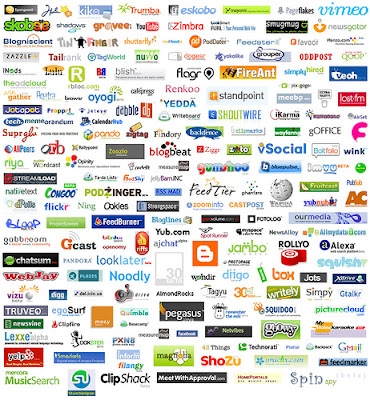The Social Context (1)- Community, Participation & Web 2.0
(Community, Participation & Web 2.0)
(Community, Participation & Web 2.0)
Lecture:
Web 2.0
... is all about making new and improved forms of connections on the net, Web 2.0 sites allows users to interact and collaborate' with each other in a socially in a virtual community.
Examples of Web 2.0 include: social networking sites, blogs/ blogging, tagging, wikis, video sharing sites and mashups.
I included this video as it is a clear explanation of whatWeb 2.0 is.
_________________________
Specific examples are;
'Wikipedia', 'MySpace','Facebook', 'Twitter', 'Msn', 'Bebo','You-Tube' and many more....
Seminar:
We discussed why Web 2.0 is called Web 2.0, one of the main reasons that we came to is because is seen as the updated version of the World Web Wide, hence the number 2, almost as if this were he second version.
Web 2.0 is very popular, especially amongst young people however it has it bad points:
Pros Cons
of Web 2.0
Difference between Web.1and Web2.0...
“Web 1.0 was all about connecting people. It was an interactive space, and I think Web 2.0 is, of course, a piece of jargon, nobody even knows what it means. If Web 2.0 for you is blogs and wikis, then that is people to people. But that was what the Web was supposed to be all along.”
Tim Berners-Lee (2006)
What is so appealing about Web 2.0 ?
Web2.0 is forever updating, facebook for example is always changing or updating it fit with the times, wheher its introducing a new way to upload images, suc as via mobile of just the general layout you can guarentee that within a few months facebook has some new or fresher aspect whilst still following its general purpose- to connect people.
Facebook is a site where everyone is mutual, no one is of a high status or rank than anyone else. Everones overall facebook layout is pretty much the same as you cannot change it, meaning that people can concentrae more on doing the normal things in life, such as interacting.
Many people have found love, friendships and unfortunately enemies on facebook but i all comes as a package.
Although sites like facebook can connect people together alot of trouble can be caused, just like the real wold there are always problems.
Web 2.0 sites like facebook take you away from the real world and let you enter the virtual world. Its almost an escape from the reality as like myspace, twitter, bebo ect. you can create your own profile exactly how you would want to, choose who your friends are and allow people to only see as much content as you want to.
For some social networking (we2.0 sites like facebook) are like a little bit of freedom, its actually quite ironic as these sites are very controlled and in a way monitored.
Sites like these are oftedlargely controlled as they are user generated sites; its what people put into the sites that make them what they are.
Websites like 'wikipedia' are a great example; its a user website where anyone with internet access can upload or add what they would think to be helpful, educational or informatiove, so long as it is factual and relevant.
Wikipedia is a free online encyclopedia that any one can use or add to (its a way of 'sharing human knowledge'). It is used as a source or to reference peopels work and plays a large role in shared/open source of education on the internet.
The online community and contributers to sites are called 'prosumers' as they, the user of the product/ service ate involved in the making.
An exampleof this is 'Wikinomics' where users are able to share, connect with one another as a global community.







